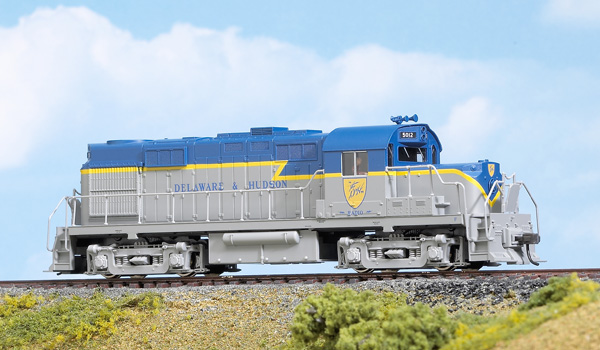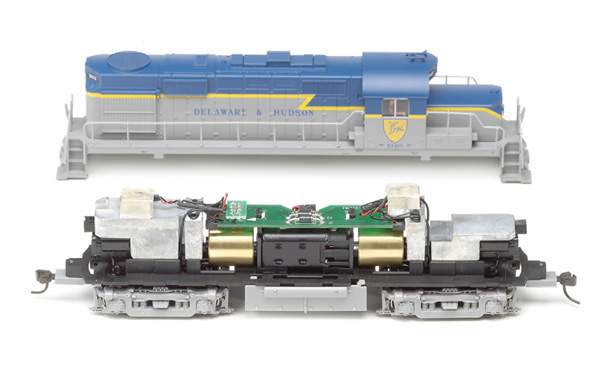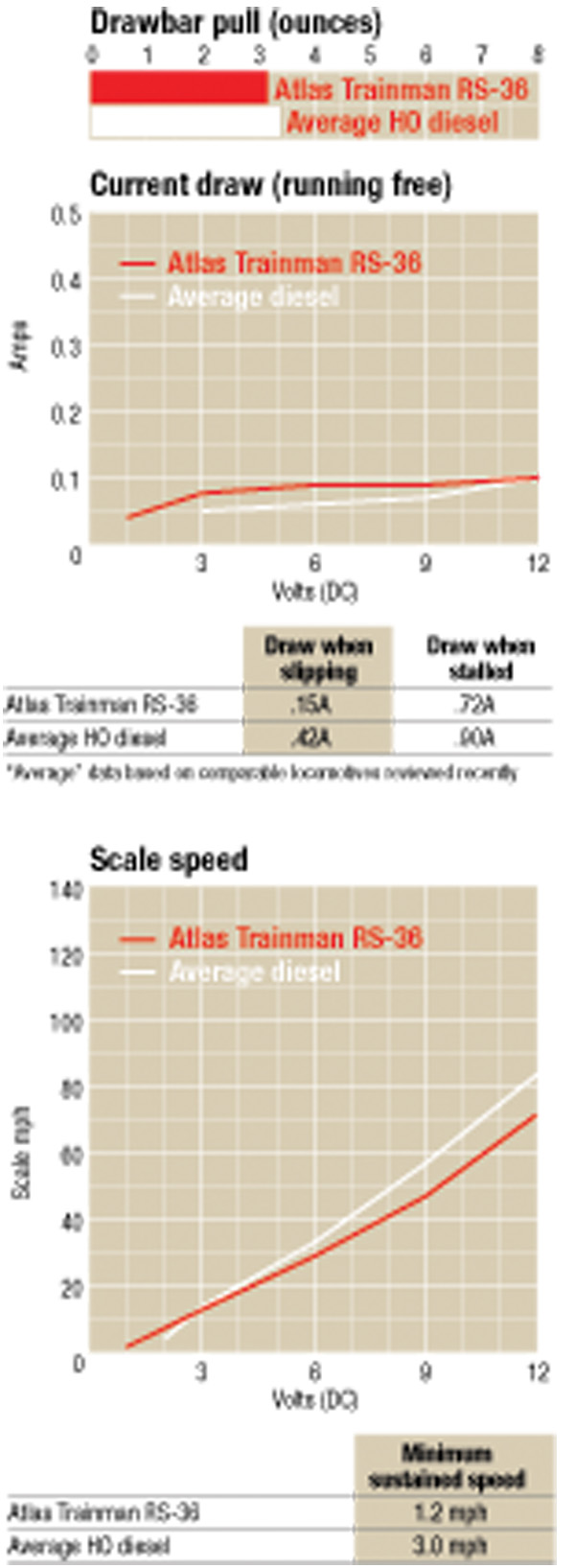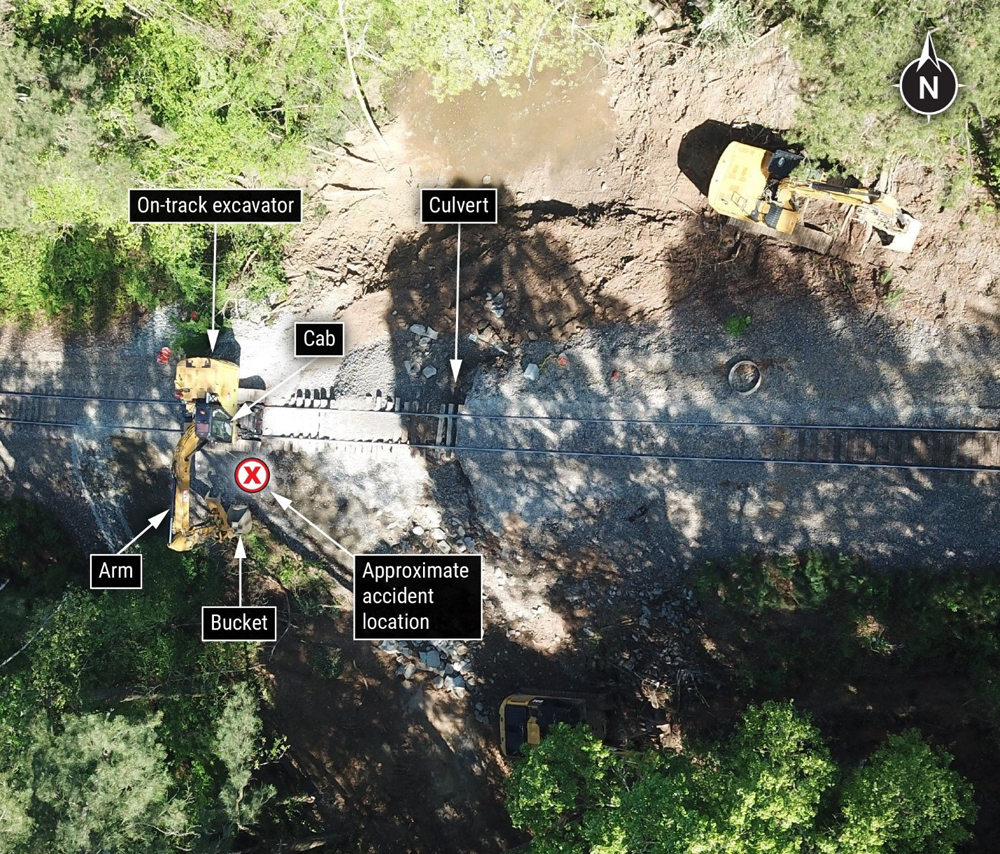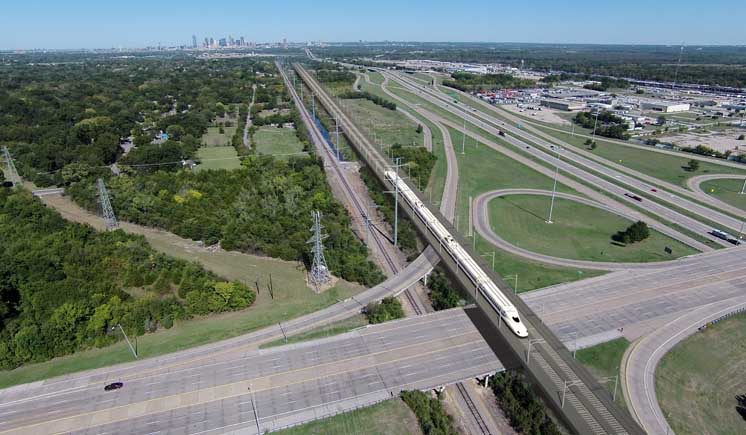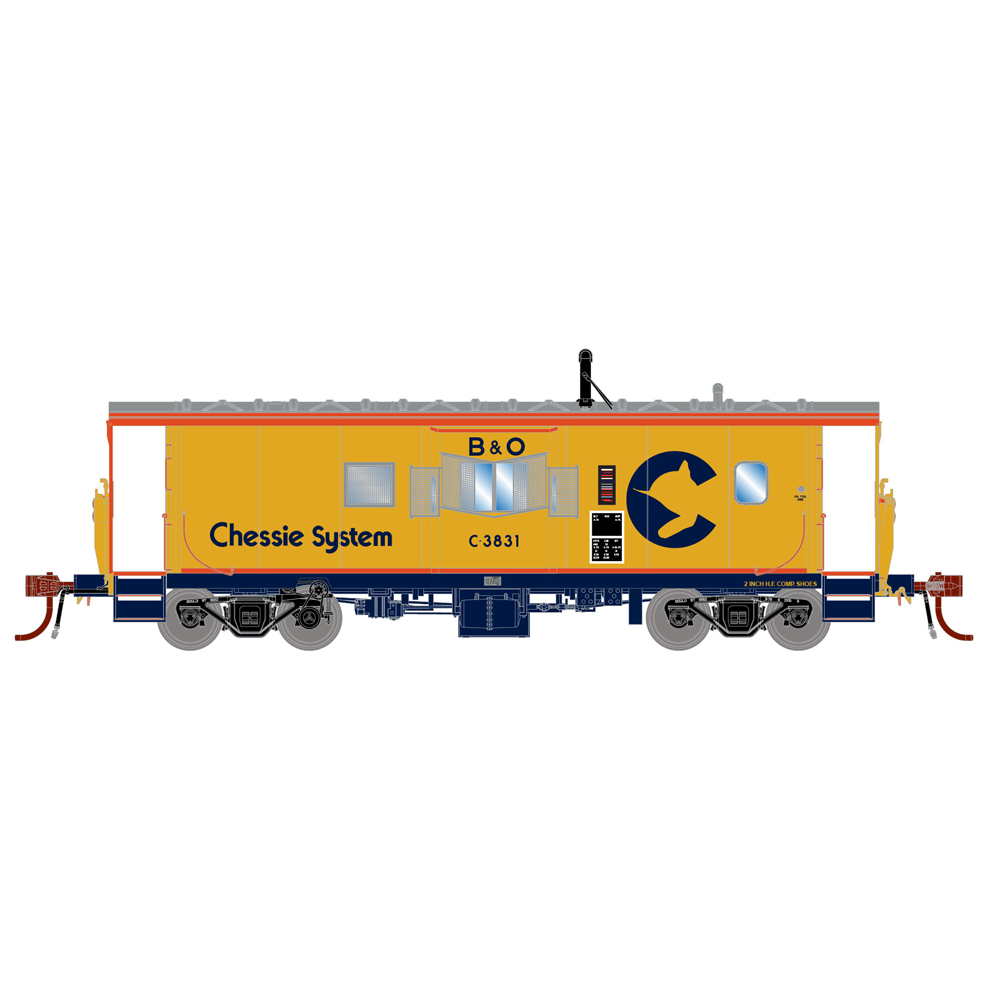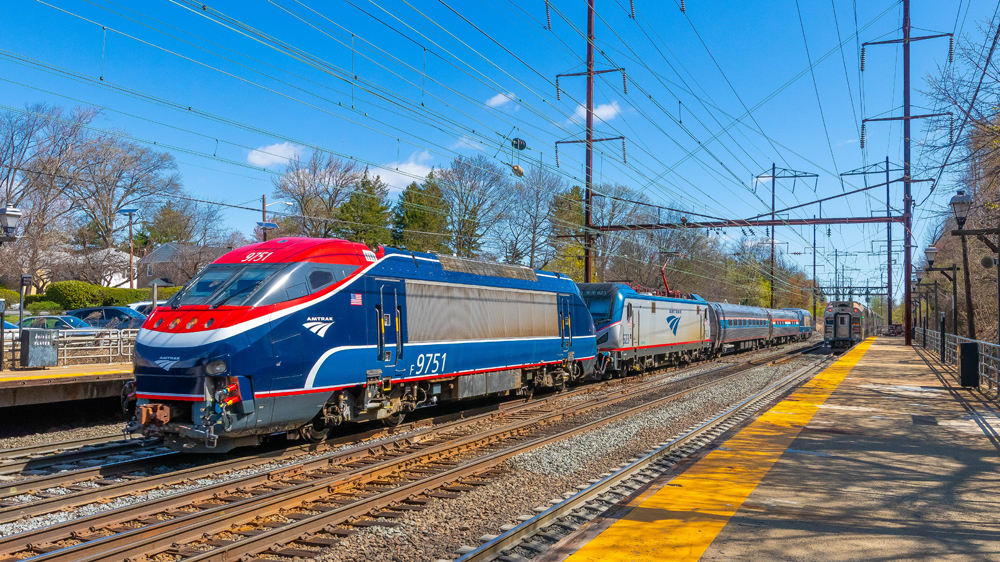The firm also offers an RS-32 in its Trainman line. The model is similar in appearance to the RS-36, but the body shell has two air filters on the fireman’s side of the long hood. On the prototype, these provided additional airflow to cool the generator.
Following the success of the RS-11, Alco began production on a new medium-horsepower locomotive, the 2,000 hp RS-32. Designed to compete with Electro-Motive Division’s GP20, the Alco unit was a flop. During a one-year production run (June 1961 to June 1962), a mere 35 locomotives were produced.
In February 1962, Alco started production on the 1,800 hp RS-36,
a replacement for the RS-11. Essentially a lower-horsepower version of the RS-32, the RS-36 didn’t do much better. At the end of the production run in August 1963, only 40 RS-36s were built, all for United States railroads. Delaware & Hudson had the largest fleet with 12, followed closely by Nickel Plate Road with 11. Other railroads that ordered the Alco RS-36 included Norfolk & Western (6), Tennessee Central (5), Apache Ry. (3), Chicago & North Western (1), and Atlantic & Danville (2).
Nickel Plate Road owned the only two RS-36s built with high short noses (to accommodate steam generator equipment). Interestingly, the RS-36 was given the Alco spec number DL-701, just like the RS-11 it replaced.
Underneath the shell is a five-pole skew wound motor with dual flywheels. The motor is seated in the middle of the chassis and is held in place with two screws located under the plastic fuel tank. The model is designed for direct-current operation, but the printed-circuit (PC) board has an eight-pin plug for conversion to Digital Command Control.
Correctly gauged, blackened nickel-silver wheels are mounted on stub axles pressed into plastic gear hubs. Wheel wipers concealed in the sideframes pick up current from all the drivers. Small retainers hold the wires to the wipers, so use caution when removing the sideframes.
The sideframes, which are molded gray acetal plastic, have a pin in the middle that press-fits into the gearbox. There’s also a small tab with a square opening at each end of the sideframe that snaps over a corresponding nub on the gearbox.
The model’s dimensions closely match drawings that were published in the July-September 1982 issue of Diesel Era magazine. Our Delaware & Hudson sample is smoothly and evenly painted, and the yellow striping is opaque. All of the lettering is crisp, but the road name on the long hood is printed too close to the stripe.
In addition, the model has gray acetal plastic handrails with molded safety chain detail above the drop steps. On the prototype the stanchions were gray, but the horizontal railings (and vertical safety railings) were yellow. This can easily be corrected with Pactra or Faskolor remote-control car paint.
Drill-starter points are molded into the shell for those wishing to add grab irons. Templates for positioning the corner grabs are printed on the exploded-view diagram. The pilots have molded brackets for the uncoupling lever and footboard grab iron, as well as m.u. hose connectors. These molded details could easily be removed with a chisel blade and replaced with aftermarket parts.
When you combine the new RS-36 shell with a proven mechanism, you have the recipe for a successful model. Good job, Atlas!
Price: $79.95 (undecorated
$69.95)
Manufacturer
Atlas Model Railroad Co.
378 Florence Ave.
Hillside, NJ 07205
www.atlastrainman.com
Description
Plastic and die-cast metal
ready-to-run diesel
locomotive
Road name: Delaware & Hudson and undecorated
Acetal plastic handrails
Accumate magnetic knuckle couplers
Die-cast metal chassis
Directional lighting
Drawbar pull: 3.2 ounces
Drill-starting points for grab irons (not included)
Eight-pin plug for Digital Command Control decoder
Minimum radius: 18″
Weight: 12 ounces





